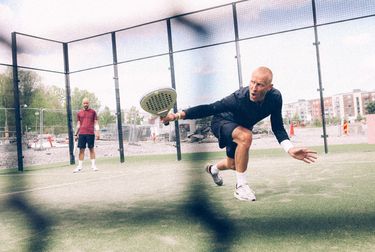

The Importance of Wall in Racquetball A Game-Changer in Strategy and Performance
Racquetball, a fast-paced indoor sport that combines elements of squash and handball, has gained popularity around the world for its vigorous gameplay and strategic depth. Central to the game is the wall—a critical element that not only dictates the rules but also significantly influences strategies and player performance. Understanding the importance of the wall can provide both beginner and advanced players with insights into improving their game.
The Role of the Wall
In racquetball, players hit a small rubber ball against a front wall, and the ball must not bounce twice before it is returned. This fundamental rule emphasizes the significance of the wall as it serves as the primary playing surface. The front wall allows for a variety of shots—forehands, backhands, and wrist shots—that can be executed with different angles and spins, creating a diverse and dynamic playing experience.
The wall is not just a backdrop; it is an active participant in the game. Players often use it to bounce the ball to create difficult angles for their opponents. Mastering how to utilize the wall effectively can lead to a strategic advantage. For instance, hitting the ball low and fast against the wall can create a hard return, making it more challenging for the opponent to respond effectively.
Strategies Involving the Wall
Players can significantly enhance their strategies by understanding how to navigate the various surfaces of the wall. A key tactic is the “z serve,” where the ball strikes the wall at an angle and then bounces towards the side walls, creating an unpredictable trajectory. This shot can catch opponents off guard, disrupting their rhythm and forcing them into defensive positions.

Additionally, the wall can be used for tactical shot placements. Targeting specific zones on the wall can dictate the speed and angle of the ball's return. For instance, targeting the upper corners can create high bounces, pushing the opponent back and leaving them with limited options for response. Conversely, hitting towards the lower areas can force the opponent to execute challenging low shots, promoting errors.
The Psychological Aspect
The wall also plays a psychological role in racquetball. Understanding one’s own relationship with the wall can lead to greater confidence during play. Players who have a strong sense of court awareness can anticipate ball bounces and plan their movements accordingly, which can enhance performance and reduce anxiety during matches.
Moreover, awareness of the opponent’s use of the wall can inform defensive strategies. Recognizing when an opponent is likely to aim for a tricky angle or a fast-paced shot can allow players to position themselves optimally, increasing their chances of returning the ball effectively. This strategic mind-game culminates in a fascinating mental aspect that keeps players engaged and constantly adapting.
Conclusion
The wall in racquetball is more than just a mere barrier; it is an integral part of the game that shapes the dynamics of play. By understanding its multifaceted role—from facilitating various shots to establishing strategic advantages—players can enhance their skills and performance. Whether through the development of innovative techniques or through the psychological nuances of gameplay, the wall is a crucial element that demonstrates the complexity and excitement inherent in racquetball. Embracing this aspect of the sport not only elevates individual play but also contributes to the overall enjoyment and competitiveness of the game. As players continue to explore and exploit the capabilities of the wall, the rich tapestry of racquetball strategies will only expand, making every match a unique challenge.
High-Performance Industrial Flooring Solutions China Paddle Tennis Court for Sale
High-Performance Industrial Flooring Solutions Durable & Cost-Effective
Homogeneous Transparent Floor – Durable & Stylish Rubber Floor Solutions
Premium Homogeneous Transparent Floor for Durable & Stylish Spaces Rubber Floor Solutions
Premium Sports Floor Solutions Durable PVC Sports Floor & Rubber Floor for Gyms
Durable Rubber Composite Floor Premium Rubber Floor & Mats Solutions